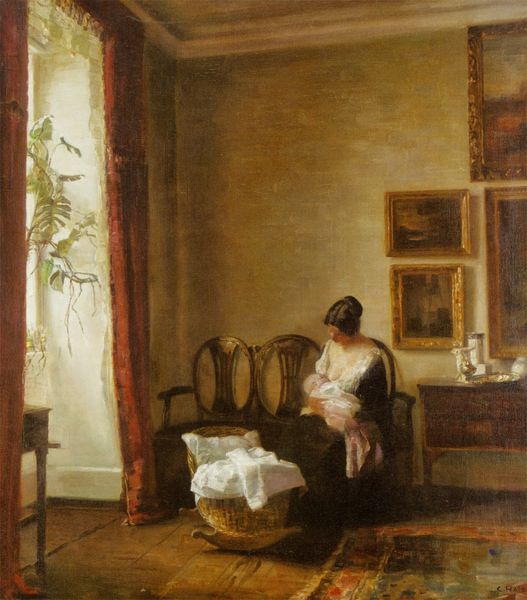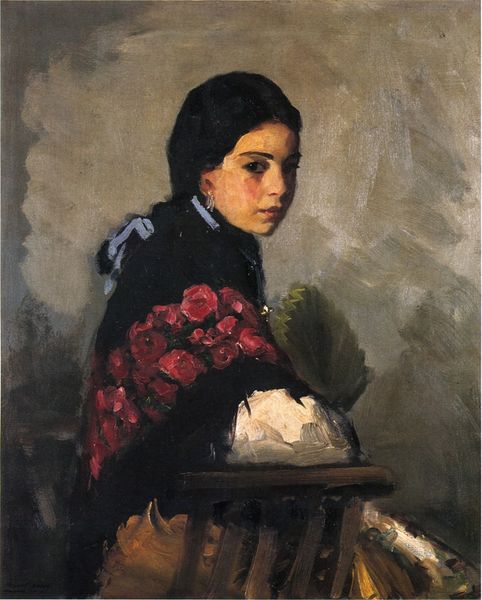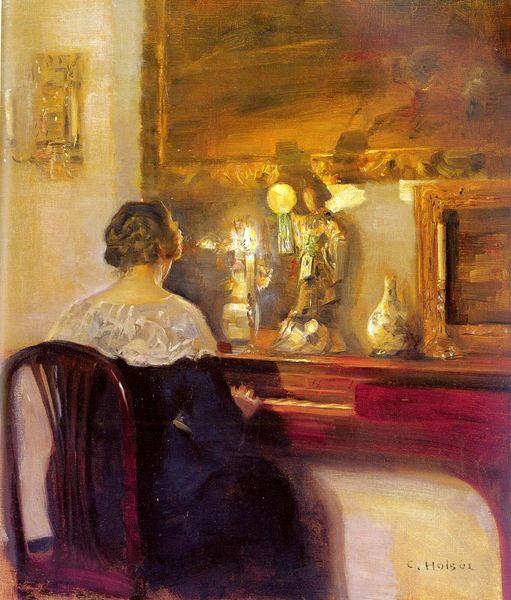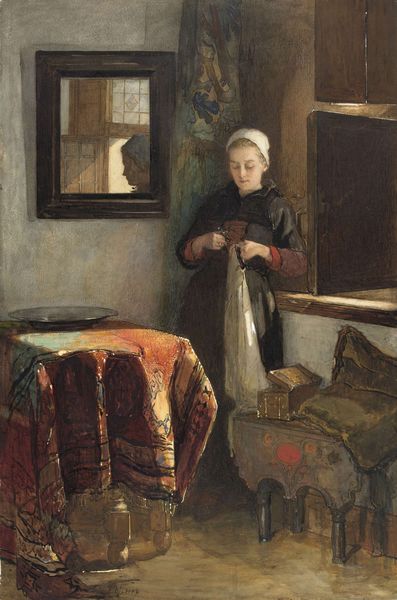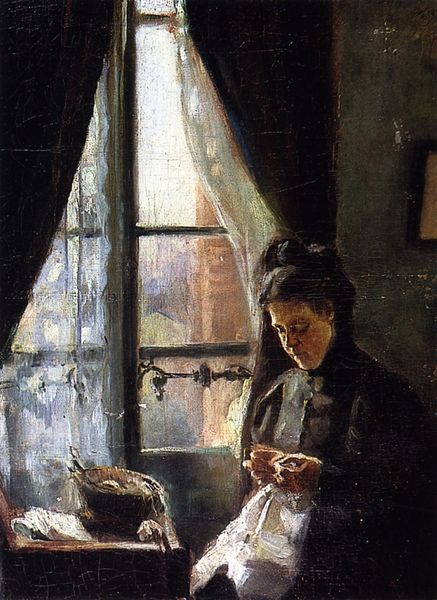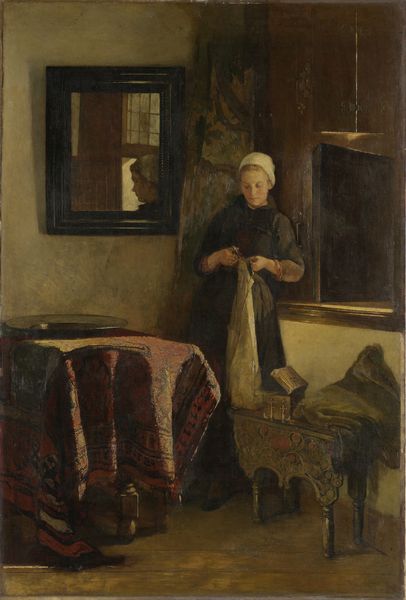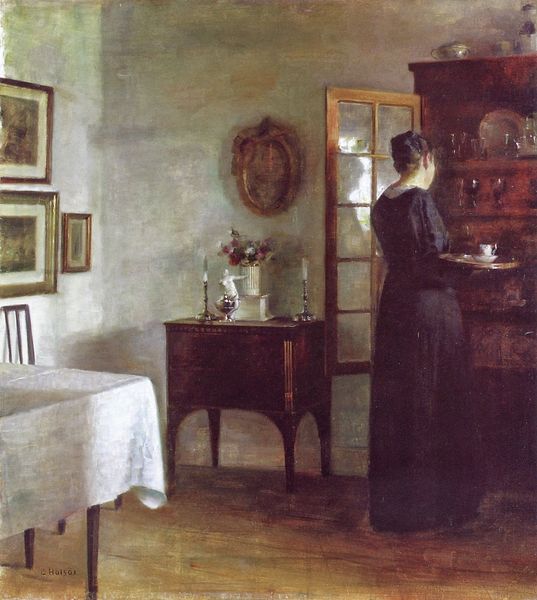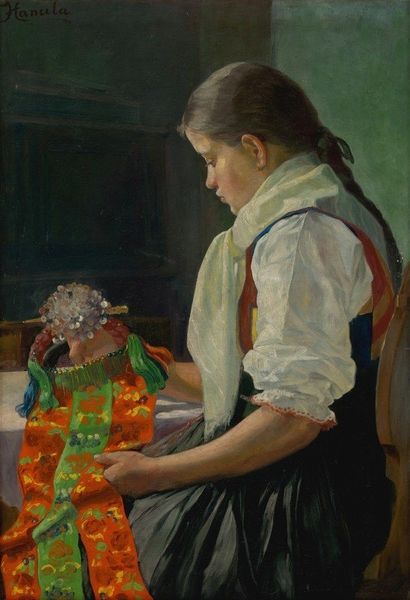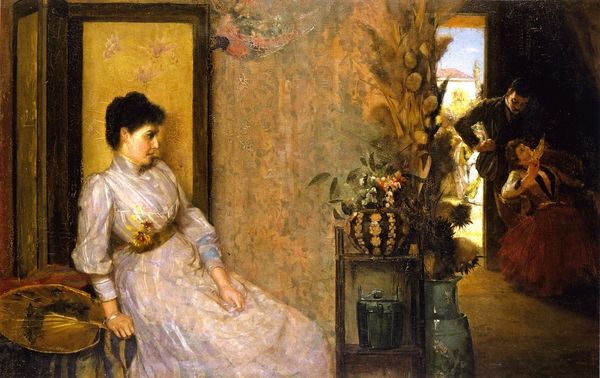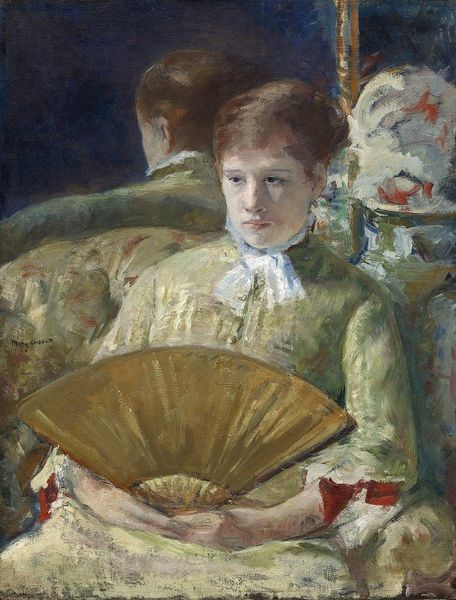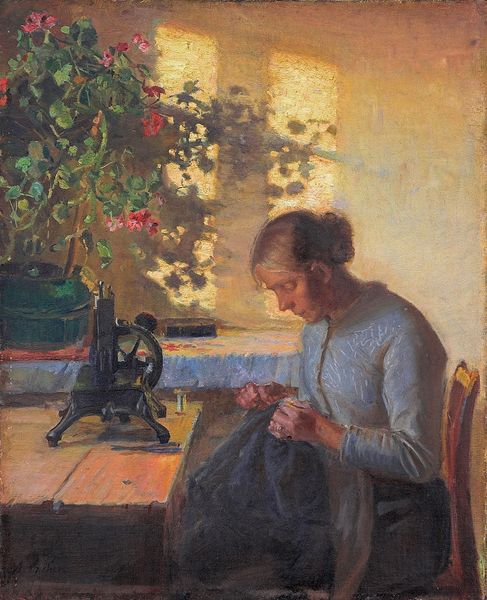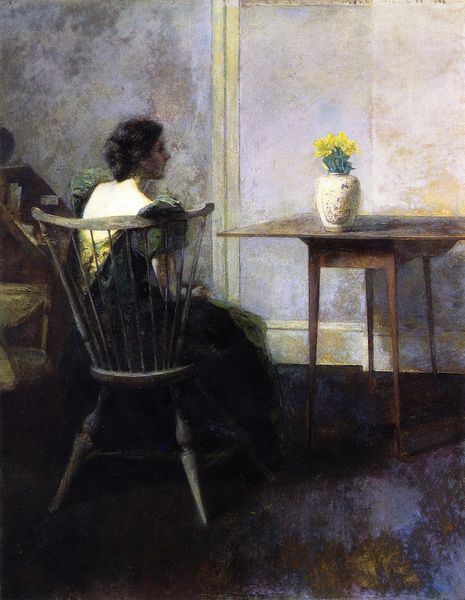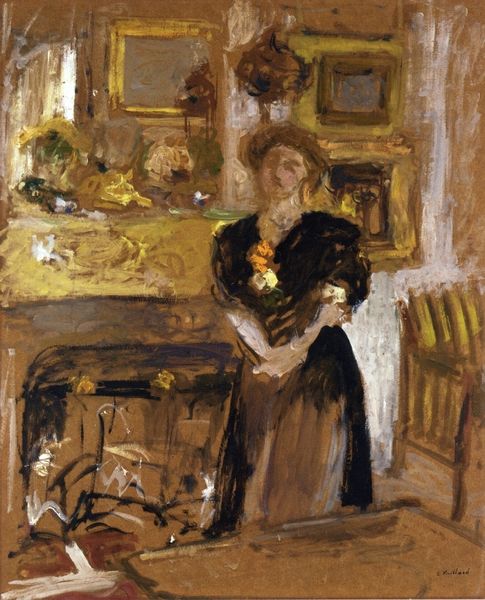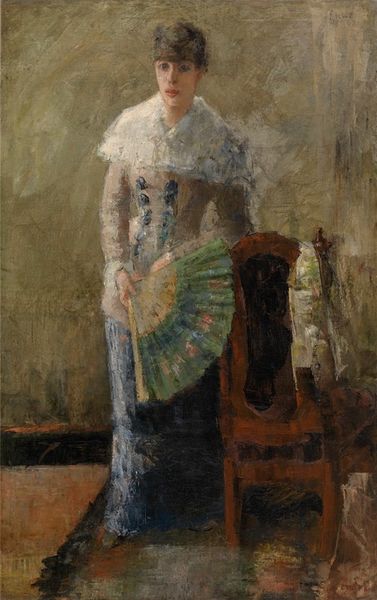
Dimensions: support: 502 x 351 mm frame: 765 x 615 x 110 mm
Copyright: CC-BY-NC-ND 4.0 DEED, Photo: Tate
Editor: Frank Bramley's "Primrose Day" feels incredibly poignant. The girl's quiet pose, surrounded by these delicate yellow flowers... what are your thoughts on this painting? Curator: This piece invites us to consider Victorian-era social structures and gender roles. Primrose Day was a commemoration of Benjamin Disraeli, but the girl's somber expression prompts us to question the romanticized image of national mourning. Editor: So, her expression challenges the painting's potential patriotic reading? Curator: Exactly. It makes you consider the labor involved in gathering those flowers and the limited agency afforded to young working-class women in that period. It highlights the potential for subversive interpretations within seemingly sentimental imagery. Editor: That gives me a completely new perspective. I hadn't considered that tension. Curator: Art often functions as a cultural mirror, reflecting both dominant ideologies and subtle resistance.
Comments
Join the conversation
Join millions of artists and users on Artera today and experience the ultimate creative platform.
tate 6 months ago
⋮
The title of this picture refers to the annual commemoration on 19 April of the death of the great Conservative statesman Benjamin Disraeli (1804-81) who was Prime Minister in 1868 and from 1874-80. Primroses were said to be his favourite flower. The girl has been collecting primroses in her hat; others are arranged in a vase on the table, above which is a print of Disraeli. Bramley's picture is also an exercise in the colour harmonies of yellow, white and brown. A leading Newlyn painter, he has used the square brush and horizontal strokes for which the Newlyn artists were famous. Bramley was a founder member of the NEAC but resigned in 1890 after a vicious review of his work by Sickert. He was elected a Royal Academician in 1911. Gallery label, August 2004
